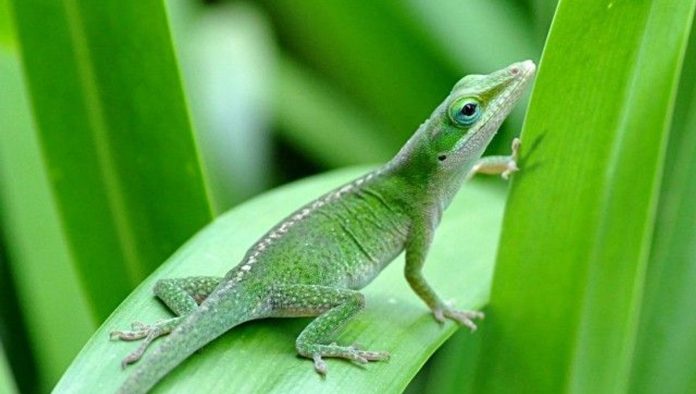A team of scientists from the University of Arizona in Tempe, Arizona are the first to completely describe the set of genes and hormones that are involved in the regeneration of tails in the green anole lizard (Anolis carolinensis). The researchers propose that regeneration is adaptable to humans because the genetic systems that are used in regeneration of tails in lizards exist in humans.
The scientists found that there are a total of 326 genes involved in the regeneration of tails in green anole lizards. The Wnt signaling pathways, the MAPK/FGF pathways, two micro-RNA precursor families, 22 unclassified non-coding RNA types, and three novel protein-coding genes became active when the lizards tail was lost. The entire group of genes is considered to be conserved. This indicates that the genes have been relatively unchanged by evolution independent of the species the genes exist in.
Of the many animals that can regenerate lost appendages, lizards are the most closely related to humans in genetic terms. All of the genes and signal pathways that produce tail regeneration in lizards exist in humans. The process of tail regeneration usually takes about 60 days and involves a defined set of steps that are genetically controlled. Specific steps were identified that involve the regeneration of skin, blood vessels, hair, nerves, and flesh. The cascade of gene activation involved brain stimulation to produce hormones.
The researchers indicate that the most important discovery in the study was that lizards have satellite cells like human. Satellite cells can develop into a number of different tissues depending on hormonal stimulation. The study has produced a realistic expectation that the same process that regenerates lizard’s tails can be used to regenerate human body parts and potentially organs. The genes that are needed to regenerate lost appendages in people are already present and this study has determined how to turn the process on in humans.















